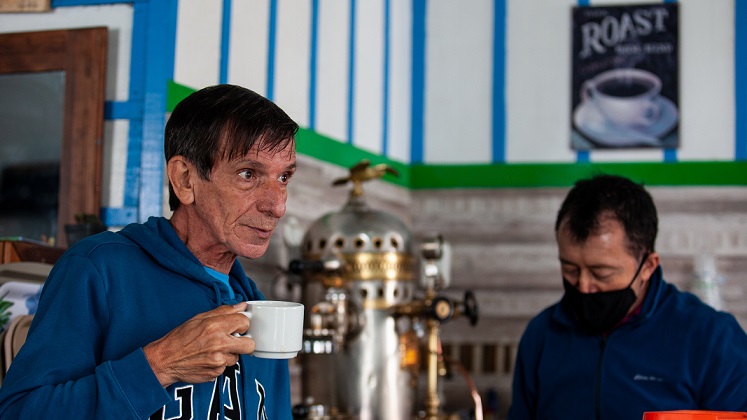 The cost to Latin America of being the world’s most violent region is not only a human one. New research by Laura Jaitman reveals that its enormous economic costs are equal to annual spending on infrastructure, or enough to halve the region’s housing deficit.
The cost to Latin America of being the world’s most violent region is not only a human one. New research by Laura Jaitman reveals that its enormous economic costs are equal to annual spending on infrastructure, or enough to halve the region’s housing deficit.
The Latin American and Caribbean region has made progress in many socioeconomic areas over the past decade. Between 2004 and 2014, most of the countries had annual growth rates of nearly 4 percent, poverty rates fell, and citizens in the region became healthier and better-educated.
But in contrast to these positive developments, crime in the region has increased. Latin America and the Caribbean continues to be the most violent region on Earth, and the World Health Organization considers crime and violence in the region to be at epidemic levels. With a homicide rate reaching 24 homicides per 100,000 population in 2015 (four times the global average), the region accounts for 33 percent of the world’s homicides, despite being home to only 9 percent of the world’s population. Robberies are on the rise in the region, and 6 out of 10 of them are violent. The region is an outlier with respect to crime: even when income and inequality are accounted for, the level of insecurity in the region is unusually higher than in other countries. This in mind, it is not so surprising that the population’s main concern is crime, even more so than unemployment or their countries’ economic situation.

High crime rates bring sizeable costs: people change their behaviour to avoid crime or engage in criminal activity, households spend to protect themselves from crime, firms reduce their investment and incur productivity losses, and governments are forced to reallocate resources. But just how large are the costs of crime and violence in Latin America and the Caribbean? And how can they be measured? Despite the relevance of these issues, the costs of crime and violence have only recently received systematic attention, not least in my own research on The Costs of Crime and Violence: New Evidence and Insights in Latin America and the Caribbean for the Inter-American Development Bank (IDB).
How large are the costs of crime and violence in Latin America and the Caribbean?
We employed the accounting methodology to estimate the costs of crime in a systematic way for 17 countries in Latin America and the Caribbean over the period 2010-2014. This is the first time that this methodology has been used in a comparable way across multiple countries.
The accounting methodology is a straightforward application of a well-established crime economics framework. Essentially, we can estimate the aggregate social welfare losses associated with crime as the difference in the total expected welfare of potential victims and criminals in the “no-crime” versus “crime” scenarios.
The overall estimates reveal a cost of US$174 billion in 2014 dollars for the region, with an average cost of around US$300 per capita on average per country (adjusting for purchasing power parity). In relative terms, crime costs Latin American and Caribbean countries 3.55 percent of their GDP on average. To put these figures into context, it is comparable to what the region spends annually on infrastructure, or equivalent to the amount needed to halve the housing deficit of the region. Although these estimates are conservative, and they only include a set of mostly direct costs, the cost of crime in Latin America and the Caribbean is twice the average cost in developed countries (Figure 1, below).

The costs of crime vary widely between countries. This illustrates the heterogeneity in the region with respect to crime. These costs in some countries (especially in Central America) are double the regional average, while in others, they are less than half. In Honduras or El Salvador, the cost of crime is a whopping 6.5% of GDP. In contrast, in Uruguay or Chile, this cost is around 2% of GDP, almost the third of that in Honduras. In nominal terms, Brazil is the country with the highest costs of crime. Violence accounted for 53 percent of the total cost of crime in the 17 countries considered in the study.
How is the cost of crime broken down?
The main component of the costs of crime is public spending on security. It accounts for 1.5% of GDP on average and includes prison administration, police services, and criminal justice administration. Private costs represent 37 percent of total cost of crime in LAC (1.37 percent of GDP). In contrast, private costs are 0.69 percent and 0.70 percent of GDP in the United Kingdom and United States, respectively. The study also shows heterogeneity regarding the composition of the costs by country and sub region (Figure 2, below)

Policy implications
It is clear from this study that crime in Latin America and the Caribbean is costly and engenders multiple distortions for all economic stakeholders. Interpreting the estimated welfare costs of crime depends significantly on the optimality of government policy, in respect to the purpose, magnitude and efficiency of spending.
The efficiency of spending on this area is questionable. Whereas spending on education and health appears to be positively correlated with improved outcomes in those sectors, spending on citizen security has not been associated with better crime outcomes. This highlights the need to promote robust impact evaluations of crime prevention and crime control policies to facilitate sound cost-benefit and cost-effectiveness analysis.
These cost estimates provide a clear picture of the impact of crime and violence in the region. We urgently need to develop the knowledge to implement evidence-based public policies on citizen security, and foster improvements in public policies that can ultimately reduce crime and its costs.
Notes:
• The views expressed here are of the authors and do not reflect the position of the Centre or of the LSE
• Please read our Comments Policy before commenting
 Laura Jaitman – Inter-American Development Bank
Laura Jaitman – Inter-American Development Bank
Dr Laura Jaitman is an Economist at the Research Department of the Inter-American Development Bank (IDB). She joined the IDB in 2014, where she previously coordinated the research agenda for the Citizen Security and Justice sector. Her principal areas of research are the economics of crime, development economics, and political economy. Before joining the IDB, she worked for a decade as a consultant to the World Bank, the IDB, and J-PAL in the evaluation of public policies in different countries of Latin America. Jaitman holds a PhD in Economics from University College London. Her work was published in international peer reviewed journals such as the Economic Journal, and the Journal of Economic Behavior and Organization, among others.






Better and more sound economic policies that build a “Middle-Class” is what’s needed. Poverty drives crime. In Latin America you have Rich or Poor with little to no middle-class.
Cary Michael Cox